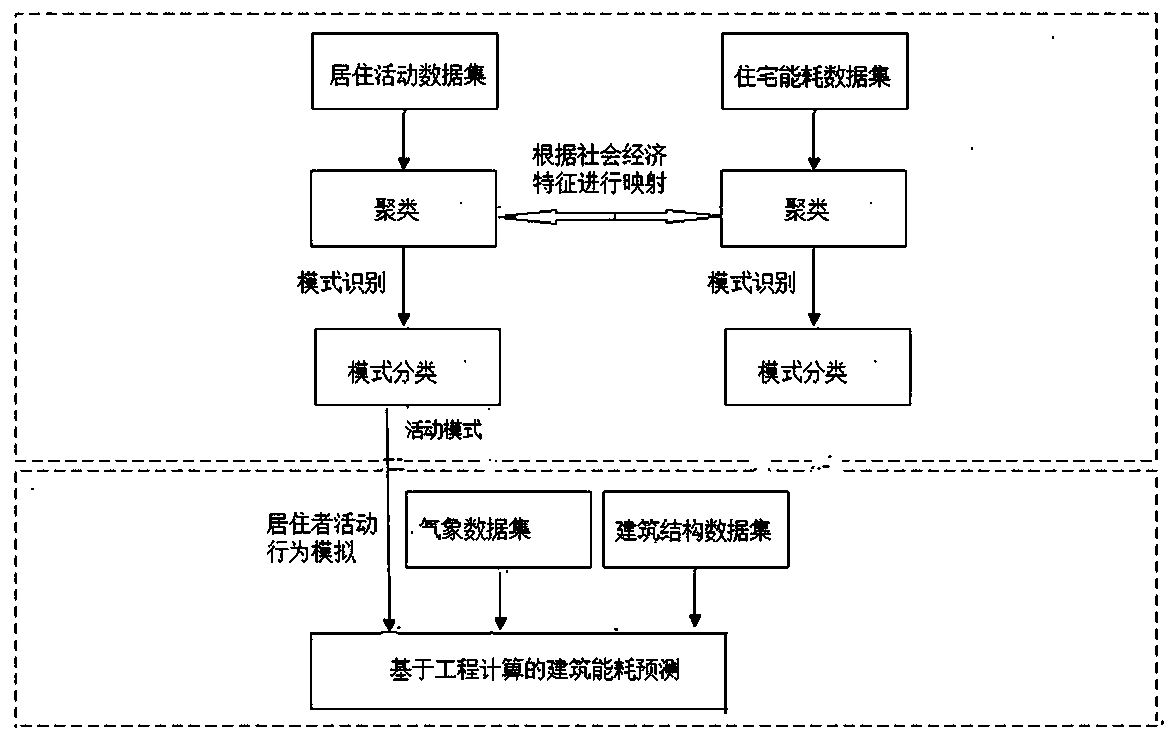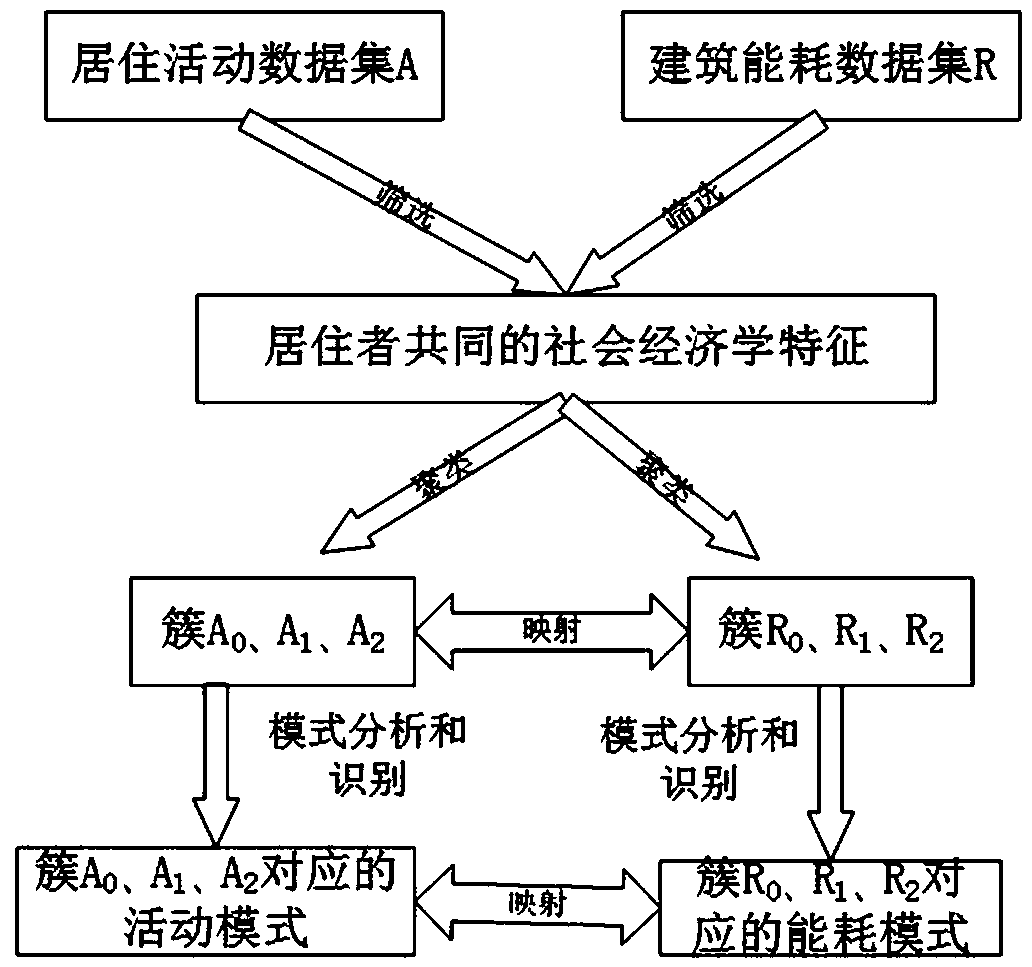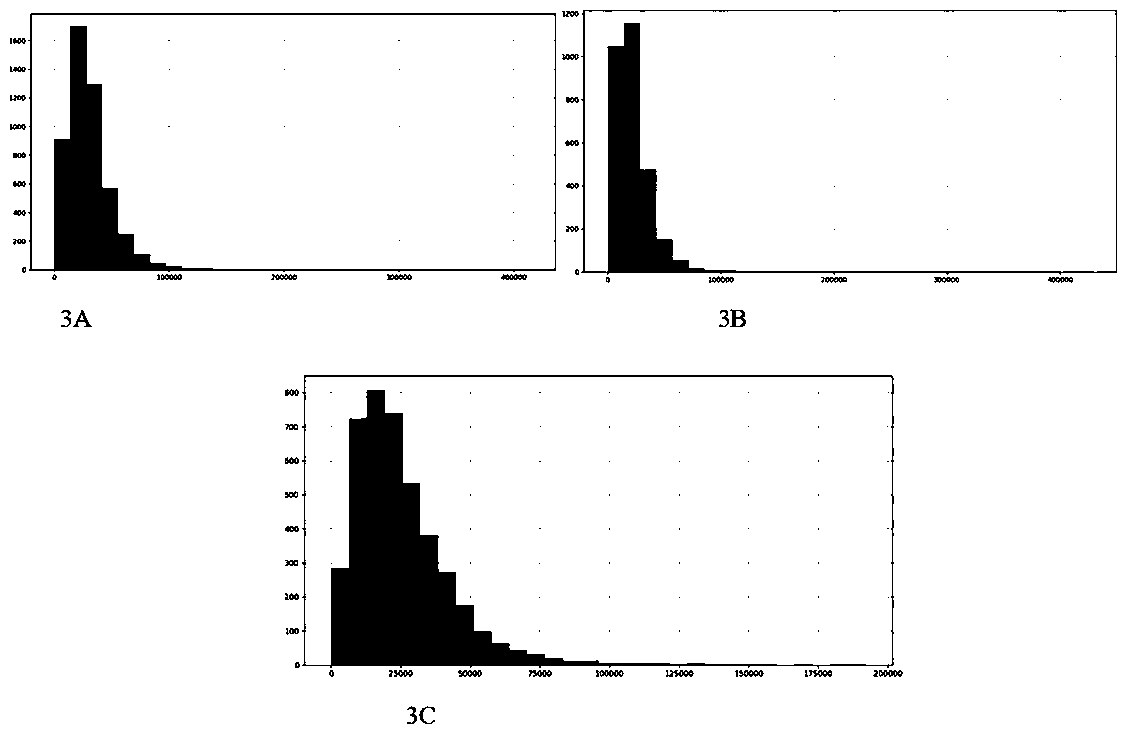Residential energy consumption prediction method based on residential user activity mode
A user activity and activity pattern technology, applied in residential energy consumption forecasting, residential energy consumption forecasting based on residential user activity patterns, can solve problems such as insufficient information, and achieve the effect of narrowing the parameter space and making accurate predictions
- Summary
- Abstract
- Description
- Claims
- Application Information
AI Technical Summary
Problems solved by technology
Method used
Image
Examples
Embodiment 1
[0038] This embodiment discloses a residential energy consumption prediction method based on residential user activity patterns, such as figure 1 As shown, this method includes two steps: the identification and classification of activity behavior and energy consumption patterns and the prediction of building energy consumption based on residential activity patterns. The identification and classification of activity behavior and energy consumption patterns are aimed at large-scale multi-source data sets, Including the residential user activity data set and the energy consumption data set, first extract the common residential user socio-economic characteristics, and perform unsupervised learning clustering; through the analysis and mining of the clustering results, the corresponding residential user activity behaviors are found The mapping relationship between the model and the building energy consumption pattern is obtained to obtain the manually marked category, and finally the...
PUM
 Login to View More
Login to View More Abstract
Description
Claims
Application Information
 Login to View More
Login to View More - R&D
- Intellectual Property
- Life Sciences
- Materials
- Tech Scout
- Unparalleled Data Quality
- Higher Quality Content
- 60% Fewer Hallucinations
Browse by: Latest US Patents, China's latest patents, Technical Efficacy Thesaurus, Application Domain, Technology Topic, Popular Technical Reports.
© 2025 PatSnap. All rights reserved.Legal|Privacy policy|Modern Slavery Act Transparency Statement|Sitemap|About US| Contact US: help@patsnap.com



